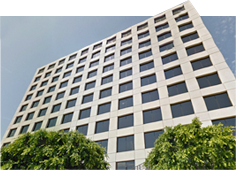Retaining an Employment-Based Priority Date for Future I-140 Filings
Under current visa number estimates, the employment-based path to U.S. Permanent Resident Status for beneficiaries can take up to twelve years for many workers, depending on their country of birth and qualifications. As such, in the years after an employer starts the petitioning process by filing a Labor Certification with the Department of Labor, the employment situation often changes, leaving the employee-beneficiary only half-way to their Green Card.
In such instances, at times a successor-in-interest situation may apply, wherein a purchase, merger or restructuring of the petitioning company allows for the takeover of the immigration sponsorship by the new company. However, when successorship is not possible—such as when the new entity is not able or willing to continue the sponsorship—there may be another option available to the employee to prevent a total loss of the pending immigration process.
Priority date retention allows a beneficiary with an approved I-140 to keep a priority date from a previously approved I-140 and use it for future green card filings. An individual may use the priority date from an approved EB-1, EB-2 or EB-3 I-140 petition for a subsequently approved EB-1, EB-2 or EB-3 petition as long as the earlier approved I-140 was not revoked for fraud or misrepresentation. The USCIS Adjudicator’s Field Manual at Chapter 22.2(d) explains the applicable provision as including “… cases where a change of employer has occurred; however, the new employer must obtain a new labor certification if the classification requested requires a labor certification.”
By way of illustration, suppose Vijay (not real name) entered the U.S. in 2008 as a visitor and later changed his status to that of an H-1B electrical engineer with Company A. In 2009 Company A filed and received approval of a Labor Certification in the EB-3 category for Vijay. Subsequently, an I-140 with a priority date of January 5, 2009 was also granted. Unfortunately in 2011, Company A fell into financial difficulty due to the loss of a major client. Vijay quickly was able to port his H-1B to Company B and lawfully maintain his H-1B status. Meanwhile, the permanent resident process commenced by Company A was no longer possible as the company was liquidated and closed down shortly after Vijay left the company.
During his tenure at Company B, the organization was impressed with Vijay’s work and decided to sponsor him for permanent residence. The company was required to start at “square one” and undergo the Labor Certification and immigrant visa petition process on behalf of Vijay. In January of 2014, when the I-140 was approved, Vijay and his employer were able to benefit from priority date retention. Although Vijay had only worked for and been sponsored by Company B for two years, his new I-140 was granted Company A’s January 5, 2009 priority date. The retention of the earlier priority date thus saved Vijay over four years of immigration waiting.
Priority Date retention, if done properly, can provide a huge benefit to individuals undergoing the employment-based sponsorship process, particularly for nationals of India and China who are subject to long priority date backlogs. Any individual with an approved I-140 petition whose employment situation is in question should discuss their case with an experienced immigration attorney proficient in employment-based immigration.
Further information regarding the Employment-Based Immigration Process is available here.
An explanation of the EB-2 Categories is available here.
Visa Options for Entrepreneurs and Small Business Owners are discussed here.






